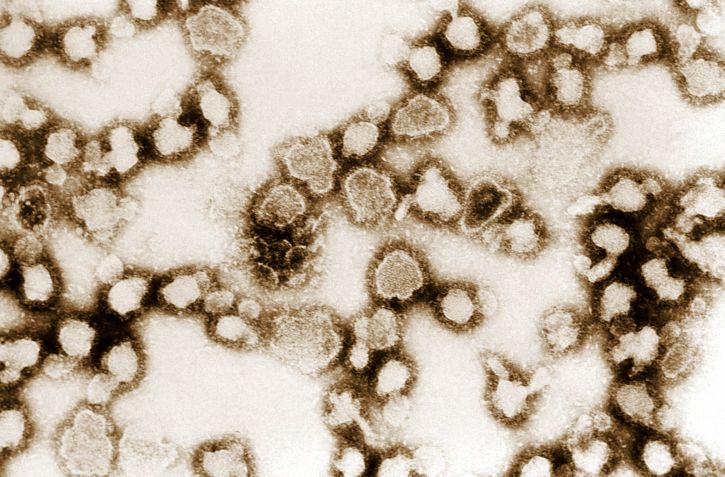Playlist
Show Playlist
Hide Playlist
California Encephalitis Virus – Bunyaviruses
-
02-50 Bunyaviruses.pdf
-
Download Lecture Overview
00:01 Then, let's look at the other end of the spectrum with the California encephalitis virus. 00:07 California encephalitis is caused mostly by the La Crosse virus, which is one of three California encephalitis viruses The virus is transmitted both by the Culex and the Aedes mosquitoes. And mammalian hosts include the chipmunk tree, squirrel and fox. 00:24 Human infections typically occur in the central and eastern United States, and it is primarily school age children who are affected by this virus. 00:33 Typically, from July to September. 00:35 Good mosquito months. 00:36 Unfortunately, the cross virus is the most common cause of arbovirus induced pediatric encephalitis in the United States. 00:44 And there are at least 30 to even 120 cases per year. 00:48 Fortunately, most infections are asymptomatic and spontaneous resolution is the rule rather than the exception. 00:55 Mortality is less than 1%. 00:58 Fortunately, this is only a low mortality infection, unpleasant to be sure, but spontaneous recovery is nearly uniform. 01:08 In patients bitten by the infected Mosquito, they have an incubation period of maybe 3-7 days, on average 4-5 days. 01:18 And it's right at the end of that incubation period that one could start to detect the RNA by an RT, reverse transcriptase, PCR, especially if one obtains that specimen, not necessarily just lung tissue but sputum, and in the also serum, blood. 01:36 Clinical manifestations, that prodrome with the flu-like illness, fever, rigors, nausea, vomiting, headache. 01:42 The headache and lethargy is perhaps more pronounced in the California encephalitis virus prodrome than it is with the hanta virus that we just talked about. 01:53 And overall, the prodrome lasts less long than it does with hantavirus, so just 1-4 days. 02:01 Then, the patient develops progressive drowsiness, alteration of their level of consciousness, in fact, becoming very confused. 02:09 Patients, especially children, will develop seizures and also focal neurologic findings, which may be cranial nerve palsies, and then ultimately, progressing into coma for about 10% of patients. 02:21 Fortunately, again, the recovery is spontaneous, nd most all patients recover without any significant neurologic sequelae. 02:30 So, 2 different viruses that we've talked about in this family, 2 completely different clinical manifestations, and even with hantavirus, 2 different clinical syndromes. 02:41 So, a key takeaway from this particular session is that viral disease is going to appear differently depending on its tropism, depending on its intended target, and what type of disease or what type of cell tissue is destroyed by the virus. 02:57 Here ends the lesson.
About the Lecture
The lecture California Encephalitis Virus – Bunyaviruses by Sean Elliott, MD is from the course Viruses.
Included Quiz Questions
Species belonging to which of the following genera of mosquitoes are most likely to serve as vectors for the transmission of California encephalitis virus?
- Aedes
- Culex
- Anopheles
- Ochlerotatus
- Culiseta
Customer reviews
5,0 of 5 stars
| 5 Stars |
|
5 |
| 4 Stars |
|
0 |
| 3 Stars |
|
0 |
| 2 Stars |
|
0 |
| 1 Star |
|
0 |




